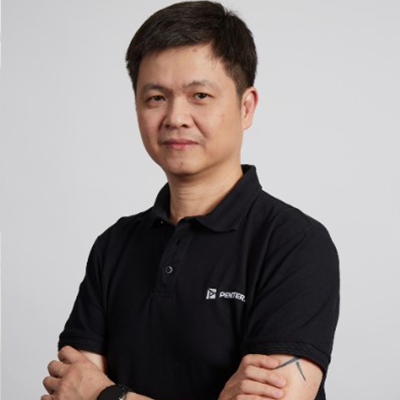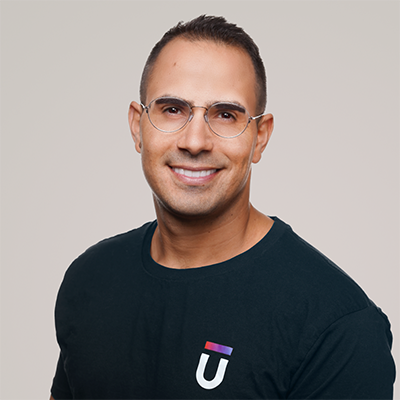Q1. What emerging trends around runtime cloud workload threats and protections are you seeing intensifying demand for CNAPP?
The digital cloud infrastructure footprint of a typical enterprise spans across multiple clouds & architectures (traditional apps, modern microservices, managed cloud services, etc) and across multiple infrastructure layers (compute, network, storage, databases, etc) which requires protection and security beyond external vulnerabilities, including internal threats and dynamic perimeters.
This new operating model of security in the cloud requires collaboration from three groups that often operate in silos. (1) Devs , (2) Sec (Security Engineers), and (3) Ops (DevOps, Platform Teams, SREs etc) people.
Usually, it is a small security team that is tasked with overseeing the expansive surface area created by a development team that's often up to 100 times larger.
One major trend that we see is the importance of the cloud runtime environment context. It provides invaluable data, revealing behaviors of applications, real risks, and how threats unfold. This new trend called 'shift-right context', together with proactive ‘shift-left practices’ could make security measures fundamentally more informed, dynamic, and effective.
We see that “Shift-Right context” is more than a data source of workload protection (CWPP/CDR) for incident/response management; it's a lens to see through the noise, prioritizing and streamlining fixes where they're needed most.
By leveraging this runtime context proactively, customers can refine security strategies, ensuring they're not just reactive but truly anticipatory. This wouldn’t merely expand your security capabilities; it would transform them, helping you achieve the goal of comprehensive cloud infrastructure security.
Q2. How does your CNAPP platform strike a balance between automated remediation actions and the involvement of cybersecurity professionals? In what scenarios do you believe human intervention is essential, and how does your technology facilitate that collaboration?
Enterprises normally have a small security team that is tasked with overseeing the expansive surface area created by a development team that's often up to 100 times larger.
Security leaders are increasingly looking to leverage automation to address the challenges of limited headcount and vast attack surfaces. There are security findings that we clearly identify as suitable for automated remediation, while others require human intervention.
The distinction lies in two categories: threats and issues.
Security threats indicate potential security incidents, often involving internal or external attackers. Examples include attempts to encrypt files (ransomware), exfiltrate data, or run malicious software like crypto miners and viruses. Once identified, these threats demand immediate, automated responses, provided they are precise, targeted, and safe for the application. With proper preventive measures and controls, most security teams would agree on the necessity of such automated responses.
Security issues, however, represent different types of findings highlighting weaknesses in overall security hygiene. These include misconfigurations, software vulnerabilities, and overly permissive roles and identities. For these issues, it's crucial to identify, prioritize, and provide clear remediation plans for human execution since quite often, the root cause lies in cloud configuration templates (IaC) or "Shift-Left" Dev/DevOps practices.
Empowering security teams with the full context of the software lifecycle, from build time ("Left") to runtime ("Right"), provides them with unmatched capabilities to quickly identify, prioritize, and resolve issues at the source, preventing them from recurring.
We believe the future of cloud security lies in increased automation, a core focus of our platform. Upon detecting any threat or issue, our CNAPP automatically gathers both runtime and CI/CD context, providing root cause analysis, remediation steps, and runtime insights to help you understand the criticality and how to respond to each risk to your business.
Q3. What are Upwind's plans at Black Hat Asia 2024? What do you plan on highlighting at the event?
At Black Hat Asia 2024, we're excited to connect with security professionals and leaders from leading companies in Asia. We're eager to hear about their security challenges and explore how we can help them transform their cloud security practices.
We'll be highlighting the benefits of a Cloud Native Application Protection Platform (CNAPP) that spans across the entire software lifecycle, from build time ("Left") to runtime ("Right"). We'll showcase how combining "Shift-Right context" with proactive "Shift Left practices" can lead to more informed, dynamic, and effective security measures.
We believe "Shift-Right context" is more than just a data source for incident/response management. It's a powerful lens that helps prioritize and streamline fixes by cutting through the noise and focusing on the areas that need them most.
By proactively leveraging this runtime context, customers can refine their security strategies and move from reactive to truly anticipatory. This doesn't just expand your security capabilities; it transforms them, helping you achieve comprehensive cloud infrastructure security.






